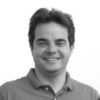
Founded in 1984 by two computer scientists from Stanford University, Cisco Systems developed the local area network (LAN) concept and achieved a market capitalization of $224 million by the time of its IPO in 1990. Today, Cisco manufactures and markets telecommunications technology as well as other high-technology products and services.
As of 2021, Cisco trades on the Nasdaq with a market cap that exceeds $260 billion. For the fiscal year ended July 31, 2021, Cisco reported total revenue of US $49.8 billion.
In this article, we’ll look at how Cisco has explored AI applications for its business and industry through these two use-cases:
- Real-Time Translations — Spurred on by a pandemic-era spike in the amount of time we spend in virtual meetings, Cisco has brought Real-Time Translations to web meetings, delivered as captions in any one of over 100 languages.
- AI-Enhanced Intent-Based Networking — Cisco brings natural language processing, machine learning, and machine reasoning to network operations and management to enable the faster, more consistent application of network policies and rules.
We will begin by examining how Cisco has added Real-Time Translations to its Webex suite of Virtual Meeting solutions.
Real-Time Translations
We spend more than 21 hours every week in meetings, according to research conducted by Reclaim.ai. Those hours, which comprise more than half of a standard 40-hour workweek, spread over an average of more than five meetings a day, and that’s up nearly 70% since February 2020.
Indeed, the pandemic—with its acceleration in the adoption of work-from-home models—has driven an increase in the amount of time we structure around virtual meetings. We’ve also come to rely on these meetings as a way to connect with colleagues, whether they are down the street or across an ocean, in this time of social distancing and lockdowns.
Wholly-owned by Cisco since 2007, Webex forms a key part of Cisco’s cognitive collaborative solutions and sells videoconferencing and web-conferencing technologies. Webex solutions include:
- Audio Intelligence to enhance sound quality during videocalls
- People Insights that track and report on worker productivity, and
- Real-Time Translations that convert spoken English into subtitles in any one of over 100 languages
According to a Metrigy report issued in Q1 2021, nearly one of every four meeting participants does not speak English as their native language. The Real-Time Translations solution, Cisco claims, translates English spoken during meetings into a participant’s chosen language. Users activate the feature, added to Webex as a paid add-on released in 2021, by clicking a button, as shown in this video:
Using AI technologies such as natural language processing and machine learning, Real-Time Translations converts talk into subtitles in other languages. Although our research did not identify detailed information about the construction or composition of its underlying engine, at least part of the solution appears to rely on Google technology, as disclosed in the Cisco Webex Meeting Privacy Data Sheet. Google has written extensively about its Neural Machine Translation solution, first introduced more than 15 years ago.
Identified as a sub-processor for Webex Assistant, Google “provides translation using text of real time speech” and “may process but not store Audio Information to provide speech-to-text services … when you add-on and use the real-time translation … feature.”
Beyond the research and technology supporting Real-Time Translations, the solution aims to overcome language barriers, Cisco claims, and acts as a “bridge to better collaboration” when it “aids understanding and creates a more inclusive meeting.”
Delivered today as captions in the language chosen by meeting participants, Cisco envisions expanding Real-Time Translations in Webex to other applications such as:
- Instruction in global classrooms to students who do not share a common language
- Telehealth services delivered to patients by doctors who speak another language
- Call centers where callers and workers speak different languages
Although our research did not identify any financial results directly related to Cisco’s Real-Time Translations offering, Cisco’s suite of Webex offerings is included in its Applications product category, which forms 11% of Cisco’s 2021 revenue, per the company’s most recent annual report. For 2021, although product revenue for Applications declined 1% or $64 million year-over-year, per Cisco, the “decline in Unified Communications and Cisco TelePresence [was] partially offset by double digit growth in IoT software offerings and growth in Webex.”
AI-Enhanced Intent-Based Networking
Beyond providing meeting participants with an interface that promotes a greater degree of collaboration and understanding through Real-Time Translations, Cisco also envisions improvements to the infrastructure supporting meeting technology itself. To this end, Cisco also aims to improve network management and operations by bringing AI to Intent-Based Network (IBN) architecture.
In an age where we increasingly rely on technology so we can meet with each other, Cisco looks to AI to improve the reliability and operation of networks so they can provide:
- High-quality, low-latency video
- Two-way communication between presenters and participants
Virtual meetings often require preparations to set up and intuition and expertise to anticipate and address potential issues that may stymie communications. During the event, issues that arise may be almost impossible to detect with enough time to allow network technicians to manually fix the problems before they impede or even prevent communication between meeting participants.
IBN aims to bring the automation and consistency promised by AI to network operation and management, which has relied heavily on manual intervention by highly skilled practitioners and hardware-based solutions.
Through AI, Cisco looks to IBN to capture business intent relative to its network policies and translate it into actionable instructions that can be executed based on business rules, through a combination of:
- Natural language processing
- Machine learning
- Machine reasoning
Through machine reasoning, the goal of IBN, Cisco claims, is to “continuously monitor and adjust network performance to help assure desired business outcomes.”
Cisco sees IBN-led networking as a closed-loop system that breaks down into four functions:
- Translation – AI uses NLP processing to capture and convert network policies into actionable rules.
- Activation – AI activates these policies to install them across a network infrastructure.
- Assurance – AI uses a combination of analytics, machine learning, and machine reasoning to assess network performance and ensure policy targets are satisfied and the business’s intent is fulfilled.
- Infrastructure – By relying on IBN, Cisco hopes to use AI to identify problems, determine their root cause, and evaluate and choose a solution with more speed and consistency than manual human intervention allows.
Cisco is careful to point out that, even in an IBN environment, network operators still retain the ability to review and accept proposed solutions before they are implemented. This, Cisco reasons, can inform the feedback loop that improves the solution’s machine-reasoning capabilities.
Below, Cisco graphically demonstrates the flow of IBN:

Through IBN, Cisco envisions:
- Simplified network operations – IBN aims to integrate workflows, bring automation to network operations and management, and centralize policy application and management throughout a network.
- Proactive network management – IBN looks to AI’s speed and consistency in determining, reporting, and fixing issues early on by relying on ML-aided network monitoring and analytics.
- Real-Time Threat Detection and Containment – Cisco hopes to use IBN to apply machine reasoning to identify threats and alert security operations and speed up containment and resolution.
Although our research was unable to find any statements regarding the financial results of Cisco’s IBN-related products or services in 2021, Cisco does appear to be investing heavily in the applications of IBN into its solutions, such as Cisco Software-Defined Access (SD-Access), Cisco SD-WAN, Cisco Nexus Dashboard, and Cisco Intent-Based Network Security.







